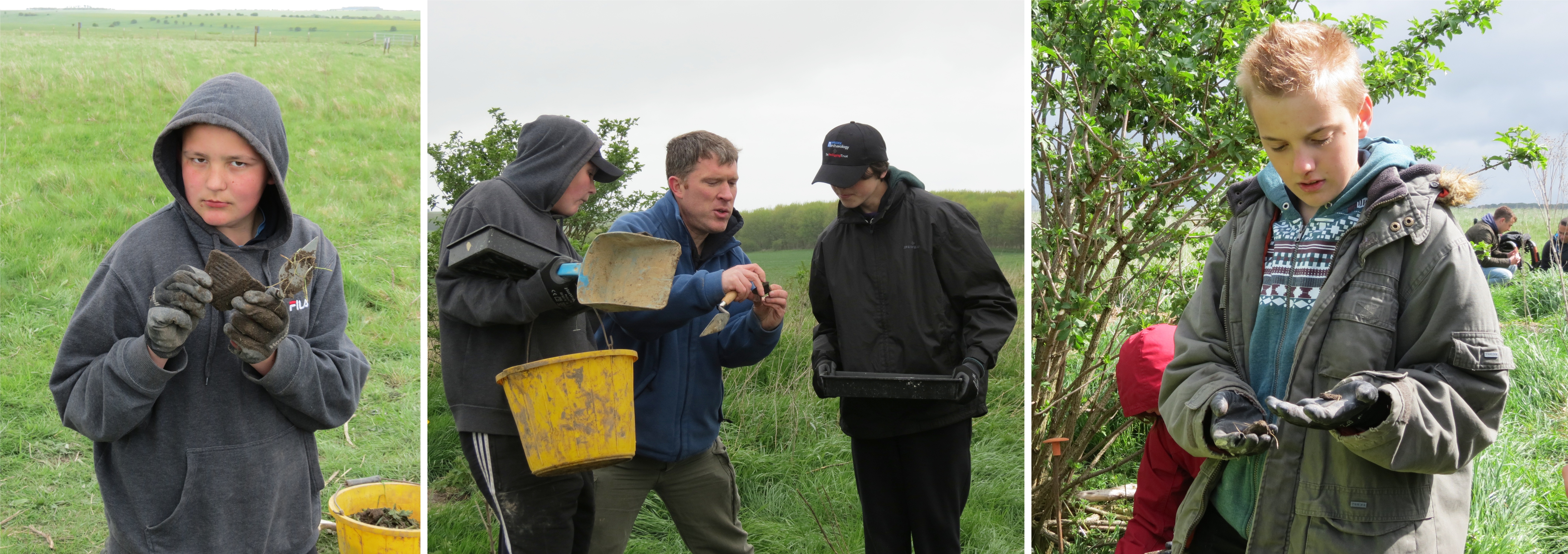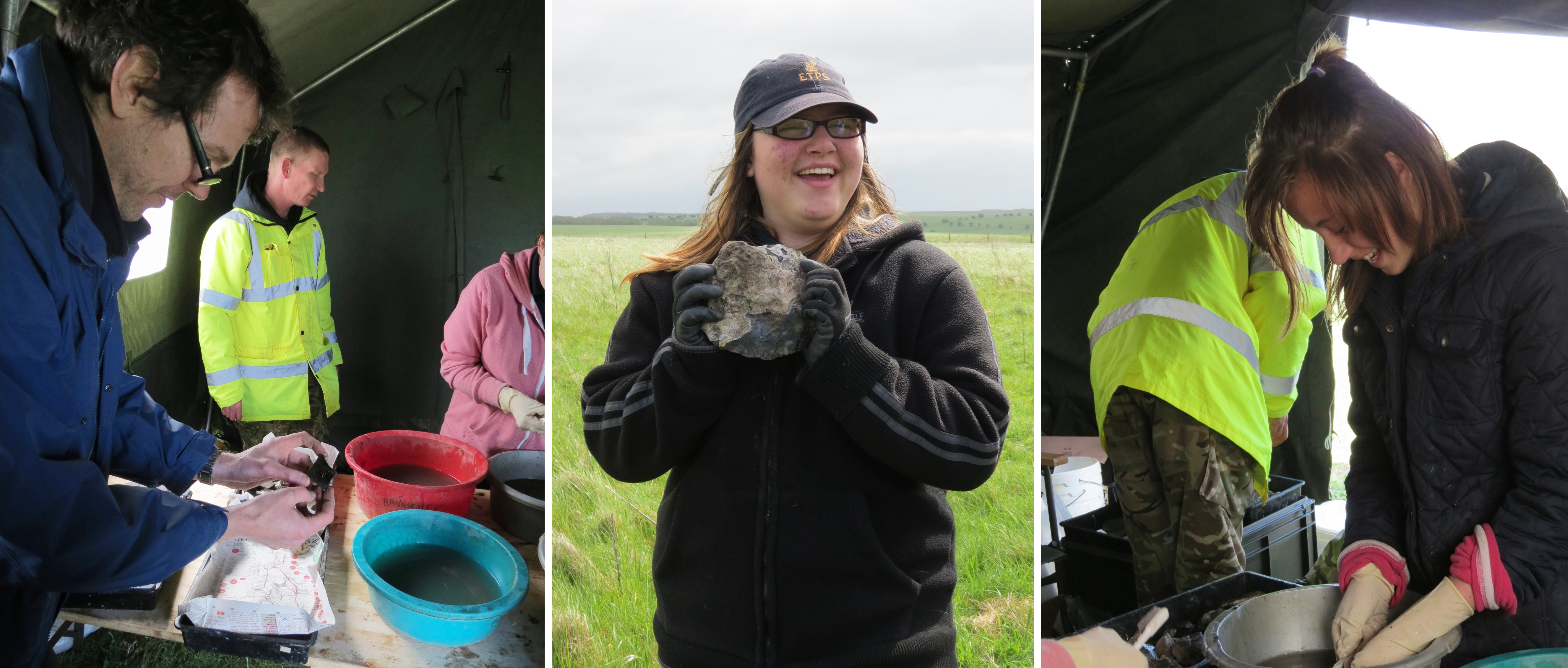10th May 2013 - Inspiration day at Chisenbury Iron Age Midden, Salisbury Plain
On Friday morning (10th May 2013) an eager group of Jon Egging Trust representatives, students, teachers, archaeologists, volunteers and military personnel gathered on a windswept Salisbury Plain for the second archaeology-themed session of the Jon Egging Trust Blue Skies programme. The event was set-up by Richard Osgood, Senior Historic Advisor for the Defence Infrastructure Organisation (DIO) in consultation with Wessex Archaeology (WA), and took place at the c. 2700 year old midden site close to East Chisenbury.
The site comprises a considerable mound of probable feasting waste and has been partly disturbed by badgers. The students’ mission was to methodically investigate the badger spoil heaps in order to recover as much archaeological material as they could find.
Three teams were headed by Wessex Archaeology’s Steve Winterton, Dave Norcott, and Angus Forshaw, James Spry (Leicester University), Richard Osgood and Cpl Tyler Christopher (DIO and 4 Rifles; Operation Nightingale). Each team was given a different spoil heap to tackle. Three volunteers from the Southampton University Air Squadron also gave up a day of their time to help out.

Within seconds all of the teams had found something. Large sherds of Iron Age pottery with some fantastic decoration, burnt and worked flint, and masses of animal bone quickly filled finds trays and then buckets. The students, teachers, archaeologists and soldiers were hooked. Even some of the more reserved characters were frequently heard exclaiming excitedly, and keenly engaged with all those nearby. Each of the teenagers got the chance to wash their finds and discuss them with the finds team – Sjt George Pas and Cpl Paul Turner or the 6 Rifles, and Dr. Matt Leivers (Wessex Archaeology). Star finds include some amazing decorated pottery, an antler tool and a large flint core.

Other activities included a map reading task with RAF Cpl Martin Puxley, where students scanned the landscape from the site’s incredible viewpoint, and identified locations and features seen on the map; you could even see the white horse at Alton Barnes! Another highlight of the day was the intense examination and sampling of the contents of the army ration packs.
It was wonderful to see the students so engrossed, so much so that it was difficult to get them to stop digging; they even enjoyed washing the artefacts! We were all impressed by their attitudes, motivation and enthusiasm, and how completely unphased they were when it came to communicating with everyone on site, including the media.

I would like to take this opportunity to acknowledge and express gratitude to all those involved, together we may have made a little bit of a difference.